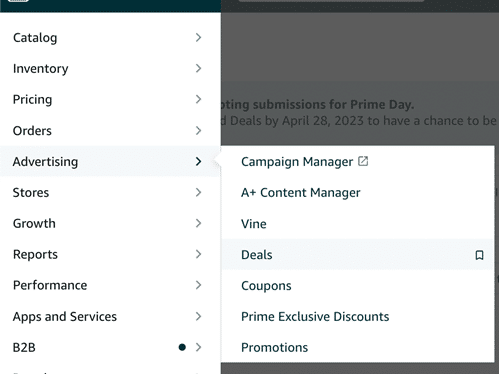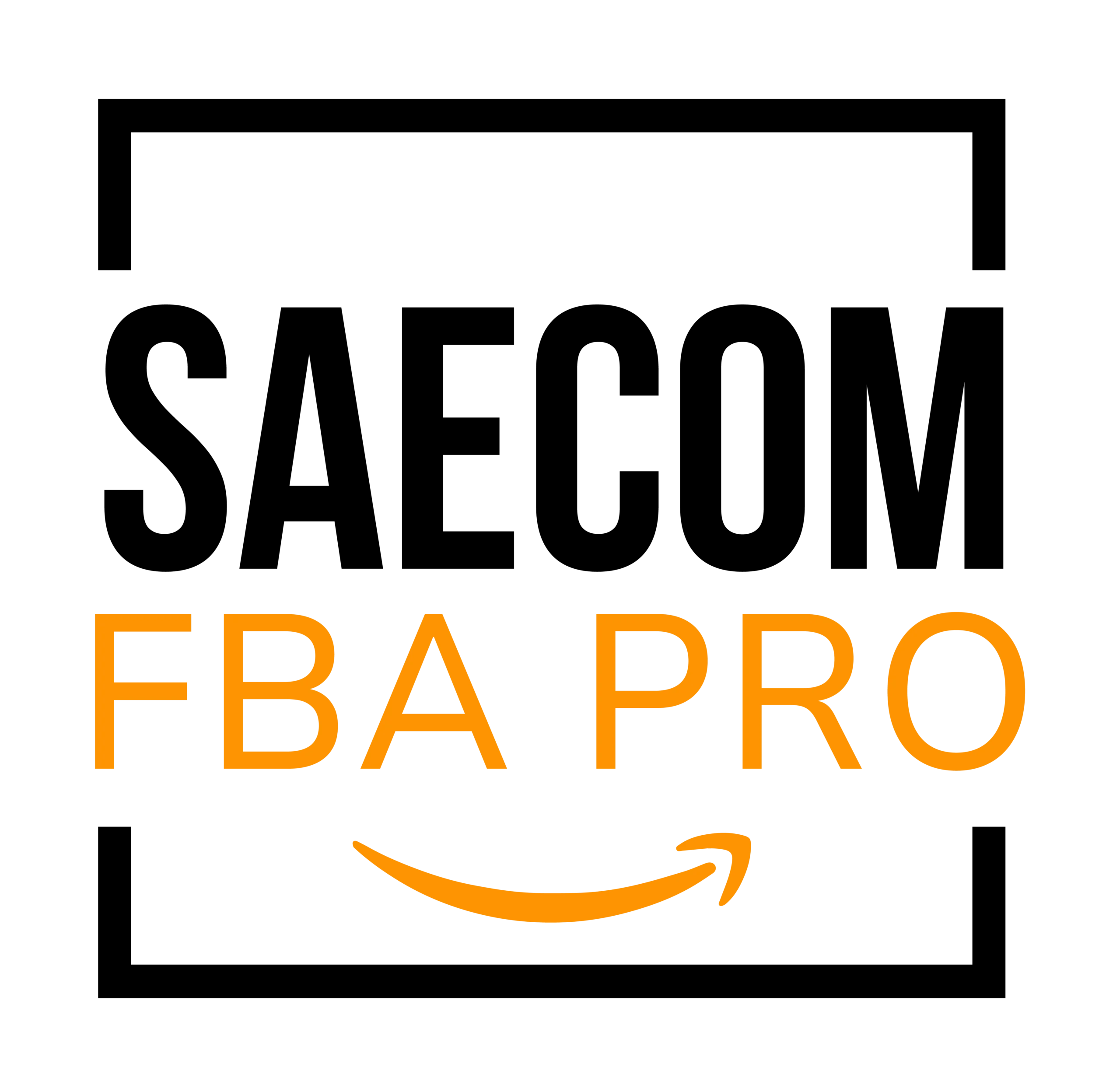Maximize FBA Sales with Amazon Lightning Deals in 2025
As an Amazon seller, you’re constantly looking for effective ways to attract more customers and boost your sales — whether it’s by refining your product listings, investing in Amazon Ads, or offering appealing promotions such lightning deals.
Running special deals or discounts is a proven method to increase sales and improve your conversion rate. After all, who can resist a great deal? In fact, over half of shoppers, around 53%, actively seek discounted products to stretch their budget.
Inside Seller Central, Amazon provides a variety of advanced tools to help sellers grow their audience and increase product sales. One such promotional tool is known as Lightning Deals.
What Are Amazon Lightning Deals?

Amazon Lightning Deals are limited-time promotions where sellers offer discounted pricing on their products for a short period.
These deals typically run for 4 to 12 hours, or until the allocated inventory runs out — making them particularly appealing to shoppers eager to grab a bargain before it’s gone.
Setting up one of these deals is straightforward and can help increase your brand’s exposure, as your offer will appear on Amazon’s Today’s Deals page and during major events like Prime Day if it coincides.
It’s essential for Amazon sellers to fully understand how Lightning Deals work and how to leverage them effectively.
The Pros and Cons of Amazon Lightning Deals
Like any selling strategy, it’s important to consider both the advantages and disadvantages before deciding if Lightning Deals align with your business objectives. While these promotions can be highly effective for some sellers, they may not suit every business. Let’s break down the pros and cons.
Benefits of Using Amazon Lightning Deals
- Boost in Sales: Lightning Deals can significantly drive product sales and enhance visibility. The limited-time nature triggers a sense of urgency in shoppers, often leading to increased purchase activity during the deal period.
- Enhanced Product Exposure: Featured products on Lightning Deals gain prominent placement on Amazon’s Deals page and in search results, exposing them to a broader audience who might not have found them otherwise.
- Opportunity for More Reviews: An increase in sales volume through a deal often leads to more customer reviews, which can improve a product’s ranking and discoverability.
- Brand Visibility: By participating in Lightning Deals, sellers can introduce their brand to new shoppers. A positive experience during a deal can turn one-time buyers into repeat customers.
- Competitive Edge: Running a Lightning Deal can give your product a leg up on similar items in the marketplace, especially if your discount outpaces those of your competitors.
- Clearance of Excess Inventory: If you have excess stock you need to move quickly, a Lightning Deal can be an effective alternative to Amazon’s liquidation services, which typically offer very low payouts.
Drawbacks of Using Amazon Lightning Deals
- Lower Profit Margins: The discounts required for Lightning Deals can eat into your profits. It’s crucial to balance the potential sales increase against the reduced margin.
- Inventory Demands: You must have enough inventory to meet the deal’s requirements. If you run out before the sale ends, the deal won’t run and you’ll still owe the deal fee.
- Crowded Marketplace: With countless sellers vying for attention, standing out during a Lightning Deal can be difficult unless your offer is particularly compelling.
- Expensive Deal Fees: Running a Lightning Deal comes with a non-refundable fee — typically $150, but fees can rise to $300–$500 during peak shopping events like Prime Day.
- Unpredictable Time Slots: While you can select a date range for your deal, Amazon controls the exact timing. Your deal might run during off-peak hours when fewer shoppers are online.
- No Sales Guarantees: Running a Lightning Deal doesn’t automatically guarantee a sales boost. If the promotion underperforms, you’ll still be responsible for paying the deal fee.
Despite these challenges, Lightning Deals can still be a valuable tactic when managed carefully. It’s wise to promote your deal outside of Amazon as well, using email marketing and social media to alert your followers and past customers.
How to Set Up an Amazon Lightning Deal?
Now that you’re familiar with what Lightning Deals are and their pros and cons, let’s walk through how to create one in Seller Central.
1. Check Your Eligibility for Amazon Lightning Deals
To participate, you’ll need a Professional Seller account with a minimum 3.5-star overall seller rating.
Additionally, your product must:
- Have an existing sales history on Amazon with at least a 3-star product rating.
- Be Prime-eligible in all shipping regions.
- Comply with Amazon’s pricing guidelines.
- Be new (not used or refurbished).
- Be suitable and appropriate for general audiences.
- Include as many product variations as possible.
- Adhere to customer review and deal frequency policies.
2. Access the Deals Section in Seller Central

Even if your products meet the eligibility requirements, they might not be immediately available for a Lightning Deal. To check, navigate to the Deals section in Seller Central and click on “Create a new deal.”
3. Select an Eligible Product

If your products qualify, they’ll be listed on the screen. From there, you can move forward with selecting the product for your deal.
4. Set the Deal’s Date Range
After choosing a product, you’ll select a date range for the promotion. Keep in mind that while you pick the window, Amazon will determine the exact timing of your Lightning Deal.
Once the deal is approved, the scheduled date and time will be displayed in your Deals dashboard about a week before it goes live.
5. Configure the Deal Settings

Next, you’ll need to set your deal price and the number of units you’re committing. Amazon requires a minimum discount of 15%, and they’ll specify the highest price you can set, the minimum discount percentage, and the inventory quantity required.
If your product has multiple variations, you can include some or all of them in your deal.
6. Review and Submit

If everything looks correct, submit your deal for approval. Remember, you can’t control the precise day and time your deal will run.
According to Amazon, by submitting a deal, you agree to pay the applicable fee if it runs, regardless of its performance. Amazon also doesn’t offer refunds for underperforming deals.
Are Lightning Deals Worth It for Amazon Sellers?
The value of Lightning Deals depends on several factors, including your marketing strategy, profit margins, and the type of product you’re offering.
While Lightning Deals can be a powerful way to boost sales and visibility, they won’t suit every business model or product.
Evaluate Your Profit Margins
A key factor to consider is whether your profit margins can absorb the required discount. Since Lightning Deals demand at least a 15% price reduction, this may not be viable for products with thin margins.
Use Amazon’s free FBA Revenue Calculator to estimate your profitability after factoring in deal prices and associated fees.
As an example, imagine selling a product for $30.99. If you run a Lightning Deal, the maximum price might be capped at $28.04. If your landed cost is $10, after calculating all Amazon fees, you can check if there’s still a reasonable profit margin.

Additionally, calculate your break-even sales volume. If your net profit per unit is $10 and the Lightning Deal fee is $150, you’d need to sell at least 15 units to cover that fee. Every unit sold after that point contributes to your profit.
If your regular sales average 20 units per day at the full price, running a Lightning Deal might be a good move.
Consider the Type of Product You’re Selling
Certain items are more suited to Lightning Deals, such as seasonal products or those with a limited shelf life.
For instance, selling holiday decorations during the festive season could result in a significant sales spike and increased visibility through a Lightning Deal.
Align With Your Marketing Goals
It’s also important to consider how a Lightning Deal fits within your overall brand and marketing strategy. While these promotions can bring in short-term sales, offering frequent or deep discounts may affect the perceived value of premium products.
Make sure your promotions enhance your long-term branding goals.
Final Thoughts: Have You Tried a Lightning Deal Yet?
Amazon Lightning Deals can be a valuable tool for boosting product sales, increasing brand exposure, and improving product ranking.
However, it’s crucial to balance the advantages with the potential risks. Assess your margins, inventory levels, product type, and broader marketing strategy before deciding to launch one.
Hopefully, this guide has answered your questions about how Lightning Deals work and how to determine if they’re right for your business.
If you still have questions, feel free to ask in the comments — we’re happy to help!


